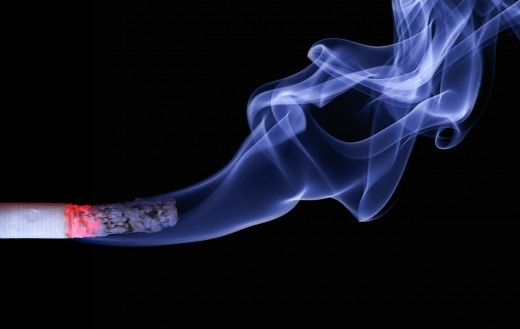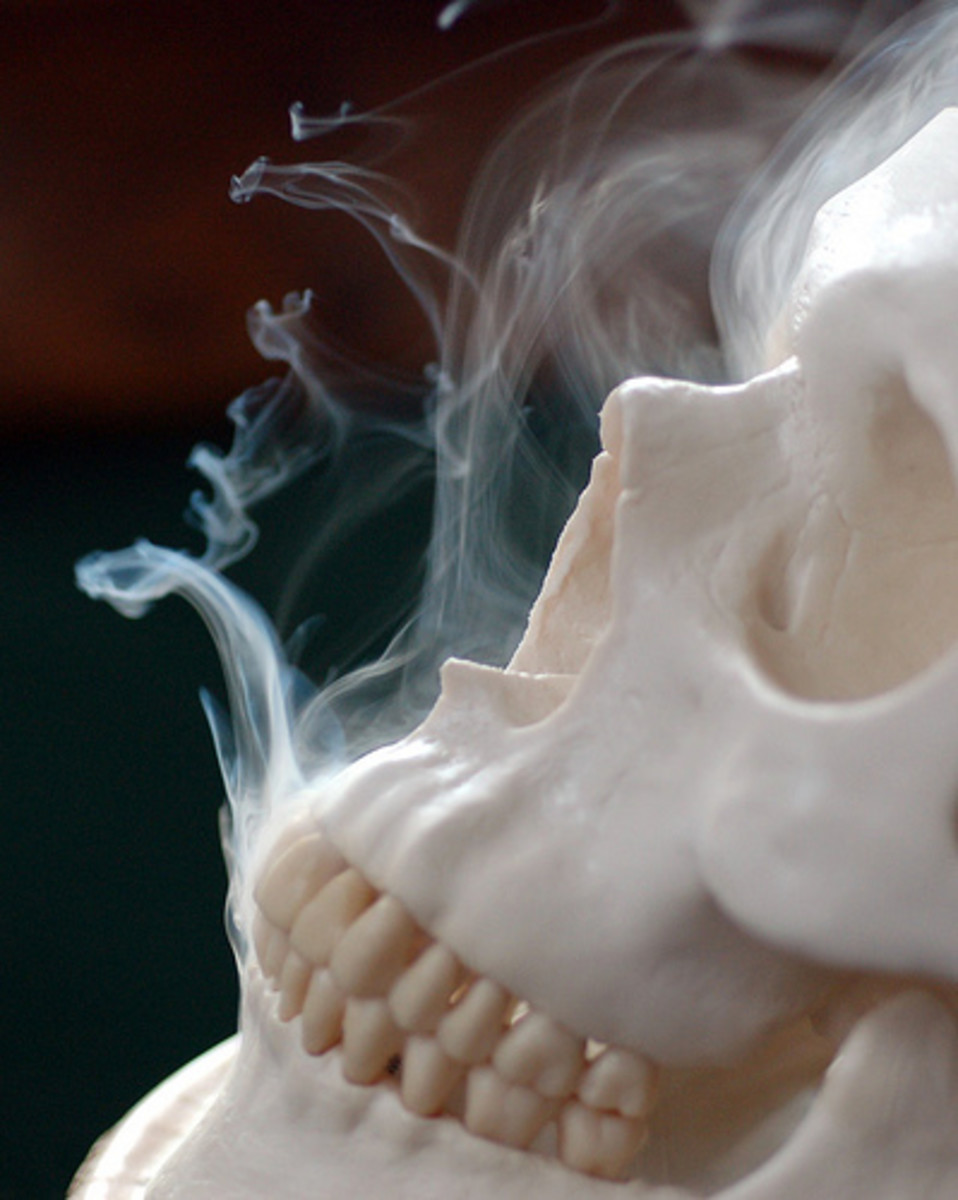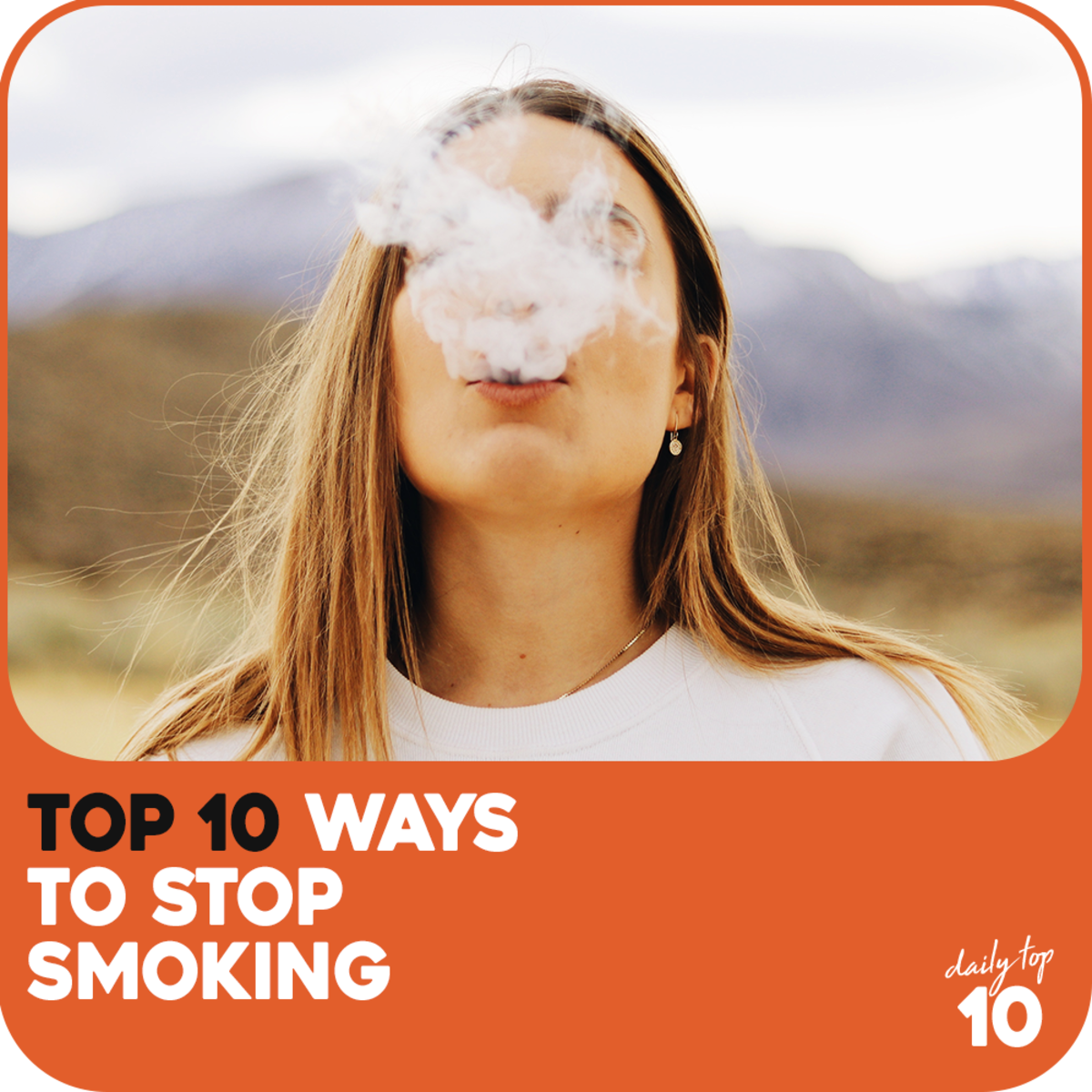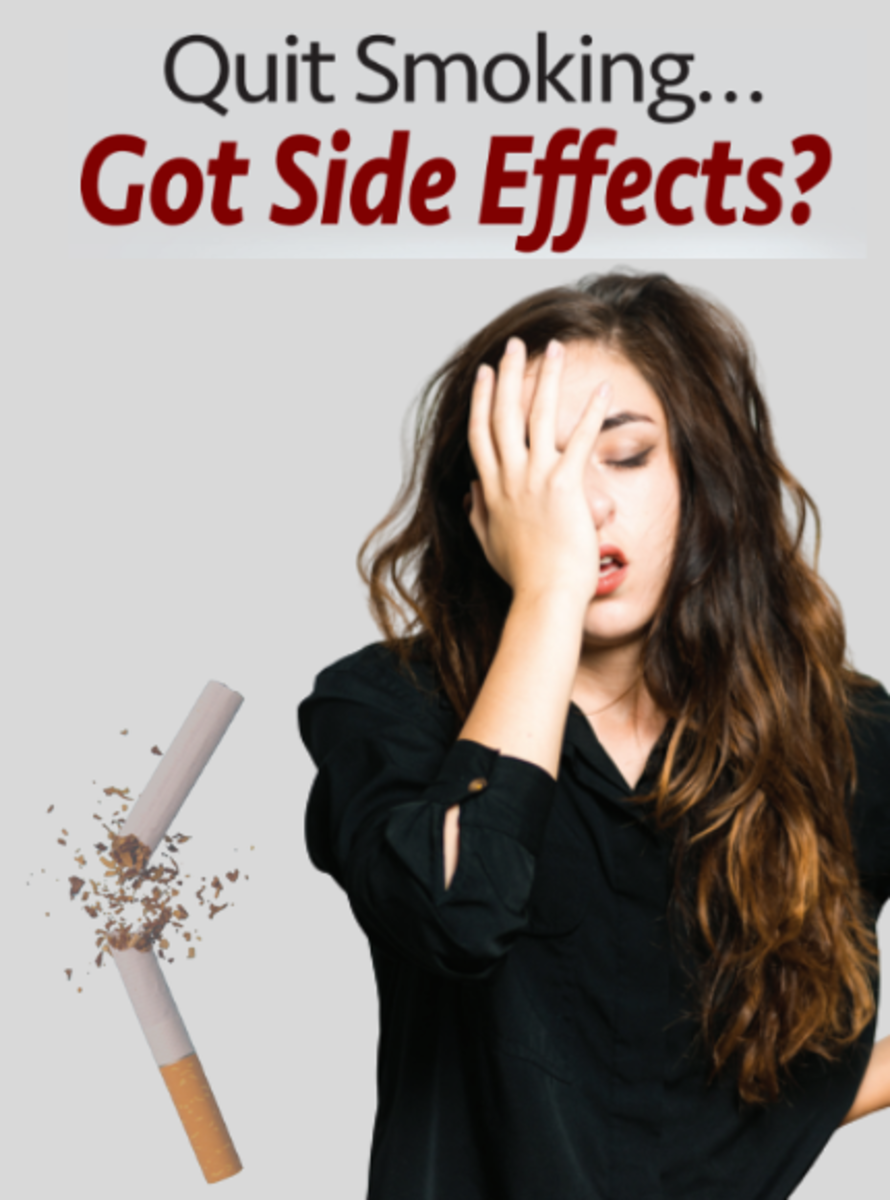Tobacco Dependence

Who Smokes?
- About 25% of the population use tobacco of some form.
- Over 3 million teenagers smoke.
- Smoking is highest in younger age groups (under 44 years of age) and among lower education levels and incomes.
Why Not Smoke?
Smoking is the leading preventable cause of death in the United States, accounting for over 400,000 deaths each year. If you smoke, you can improve your health and lengthen your life more by quitting smoking than by making any other lifestyle change (diet, exercise, stress management, etc.).
If you are a smoker, you have:
- 22 times the risk of dying from lung cancer if male
- 12 times the risk of dying from lung cancer if female
- 10 times the risk of dying from bronchitis and emphysema
- 2 to 3 times the risk of heart disease
- 2 times the risk of stroke
The good news is that, regardless of how long you've smoked, quitting and staying quit can improve your health risks.
Want to cut your health risks in half?
- Those quitting before age 50 reduce the risk of death in the next 15 years by half.
- Those quit for 10 years reduce the risk of lung cancer by almost half.
- Those quit for 1 year reduce the risk of coronary heart disease by half
Want to have the risk of a nonsmoker?
- Quit for 15 years and you have the same risk of coronary heart disease as a nonsmoker.
- Quit for 10 years and you have the same risk of stroke as a nonsmoker.
- Quit for 1 day and your pulse and blood pressure return to their baseline levels.

Nicotine Addiction
Tobacco products contain the drug nicotine. Nicotine is an addicting drug that stimulates the reward centers in your brain. The acute effects of nicotine include increased heart rate and blood pressure, increased ability to concentrate. Nicotine enters and leaves your system very quickly, leaving people who smoke with unpleasant withdrawal symptoms after going a few hours without smoking. These withdrawal symptoms (including irritability, difficulty concentrating, nausea, and anxiety) are unpleasant to go through, and can lead to strong "cravings" for tobacco.
Most people who use tobacco products began experimenting with smoking or dipping as teenagers. Unfortunately, many who experiment with smoking go on to be addicted to nicotine by the time they reach young adulthood.
How addicted are you? Hear are two simple "tests" to see if you are addicted. First, those who smoke more cigarettes tend to be more dependent on nicotine than those who smoke less. Second, how soon after waking do you have your first smoke? Those who smoke soon after waking (like within the first 5 or 10 minutes) tend to be more dependent on nicotine.
Besides the physical addiction to nicotine, there is also a strong learning component to the nicotine addiction. For example, people begin to develop "conditioned cues" for smoking after smoking for a few years. These cues are situations that have become associated with smoking. For example, many smokers report strong cravings for smoking at certain times (such as after meals, with coffee, while relaxing, when stressed out, and others). Note that a pack a day smoker puffs on a cigarette over 70,000 times each year! This means that there are a lot of opportunities for a smoker to become "conditioned" to smoke at certain times and situations. Importantly, these situations can be environmental (such as while driving), physiological (like craving a cigarette when you haven't wanted one in a while), or emotional (like smoking when you are "stressed"). Each time that smoke in one of those situations, it helps to occurs again, it triggers the desire for a cigarette.
Ready to Quit?
Research has indicated that the most important factor in success at quitting smoking is a person's desire to quit. Regardless of how you choose to quit smoking, none are likely to work if you are not ready to quit. Once you get over the hurdle and are ready to seriously commit to quitting, your odds of success increase dramatically.
Another important thing to remember is that even though most effective quit strategies reduce the cravings for nicotine, none will remove all of your cravings. Because of this, you need to be prepared and motivated to push through the discomfort associated with quitting. If you are, then consider one of the quit strategies described below. If not, you need to review your reasons for smoking or not smoking until you are ready to quit.
Common Roadblocks to Quitting
Nicotine Withdrawal. Nicotine withdrawal is uncomfortable but not life-threatening. Irritability, nervousness, difficulty concentrating, increased appetite, and urges to smoke that make up nicotine withdrawal are short-lived. Nicotine withdrawal is the worst in the first 3 days after quitting. Other types of cravings can persist days and weeks. Nicotine replacement products such as the patch and gum can help lessen withdrawal symptoms but is by no means a "cure all" for nicotine withdrawal.
Weight Gain. Because nicotine is a stimulant drug, most people who quit smoking gain weight after quitting. On average, this weight gain is about 5 to 10 lbs. The small amount of weight gain associated with quitting is far better for you than the consequences of not quitting. Nicotine replacement products and Bupropion have been demonstrated to slow down but not prevent the weight gain associated with quitting. Other lifestyle changes such as managing your diet and increasing exercise are great ways to keep weight gain off and help prevent you from going back to smoking.
Fear of Failure. Quitting is a process that usually takes a few tries to get right. The average smoker tries to quit 5 to 7 times before quitting for good. It is important to remember that prior attempts to quit are not signs of failure. Instead, they can be viewed as a learning experience. With each attempt, you learn more about your nicotine addiction and how to handle the quitting process. The fact that you've tried to quit before is likely to be a positive sign that you can quit smoking the next time.
How to Quit
There are a number of methods for quitting smoking, and you need to find the way that best suits you. There are three dimensions to consider when choosing a quit strategy.
Medications vs. Non-medication (Behavioral) approaches. Medication approaches include nicotine replacement therapies such as nicotine gum and non-nicotine medications such as bupropion. Behavioral strategies include methods to break the associations to smoking (e.g. scheduled smoking, stimulus control), coping strategies (e.g. relaxation) and relapse prevention strategies. Both types of approaches are equally effective. Since nicotine addiction has both physical and learned components, it is not surprising that a combined approach of medications and behavioral support has often been found to be better than either alone.
However, you may want to lean toward behavioral approaches if you are pregnant, under age 18, have a medical condition which would be made worse by a smoking cessation medication, or take a medication which would interact with nicotine replacement or bupropion. On the other hand, you may want to lean toward medication approaches if you aren't willing to put some work into breaking your dependence on nicotine since behavioral approaches take substantial commitment and effort on your part.
Self-help vs. professionally assisted. Most smokers try to quit on their own and tend to prefer doing it themselves instead of asking for help. However, the more intensive the quit smoking approach and the more social support available, the greater the chance of quitting. Therefore, a multi-session, group smoking cessation program offered by a health professional experienced in smoking cessation has the best chance of success. Choose the most intensive program that: a) is available to you, b) affordable, and c) fits with how you would like to quit. Unfortunately, many smokers have difficulty finding a smoking cessation program that is available, affordable, and fits their needs. Fortunately, self-help programs are available to assist smokers trying to quit on their own. Medication approaches such as nicotine gum and patch are available over-the-counter. Booklets and tapes are available from various agencies (e.g. American Lung Association, American Heart Association), and computerized self-help programs such as QuitKey also are available. Regardless of what self-help program you choose, be sure to increase the social support available to you by letting those close to you know that you are attempting to quit smoking. Ask for their support.
Cold turkey vs. gradual quitting. A majority of smokers prefer to quit abruptly, commonly referred to as "cold turkey." A number of smoking cessation treatments encourage quitting cold turkey and focus primarily on preparing you to quit, reducing the withdrawal during a cold turkey quit (e.g. nicotine gum) and/or helping you remain quit (e.g. relapse prevention). If you prefer to "get it over with" or are a light smoker (less than a pack a day), a cold turkey approach may be best for you. If instead you want to stop smoking gradually or are a heavy smoker (more than a pack a day), a gradual reduction approach may be best for you. Recent research has shown that a scheduled gradual reduction (SGR) approach in which you smoke cigarettes on a specified schedule not only helps you reduce your nicotine use gradually but also helps you disrupt your triggers or "conditioned cues" for smoking. This approach is more effective than simply reducing your cigarettes by selectively eliminating the easier ones first. The LifeSign program is an example of a scheduled gradual reduction approach.
The table below provides examples of smoking cessation strategies along these three dimensions:
Medication
| Behavioral
| |||
|---|---|---|---|---|
Cold Turkey
| Self-help
| Nicotine Gum Nicotine Patch
| ALA Freedom From Smoking
| |
Professionally Assisted
| Nicotine Inhalers
| Most Smoking Cessation Clinics (e.g. SmokeStoppers)
| ||
Gradual Reduction
| Self-help
| QuitKey
| ||
Professionally Assisted
| Bupropion
| Scheduled Gradual Reduction Program
|

Handling a Relapse
Most smoking cessation experts will tell you that quitting is easy, staying quit is hard. Nearly every smoker can quit for a few hours or even a day, but to stay quit requires developing skills to handle possible relapses and the motivation and dedication to remain quit regardless of your cravings. After quitting, here are some tips to help you remain quit.
- Remind yourself that the worst of the withdrawal symptoms subside in a couple of days.
- Most relapses occur in the first few days after quitting. Set goals for 3, 7, and 21 days of remaining abstinent from cigarettes and reward yourself for making these goals.
- Review all of the situations (both external triggers and internal mood states) that are most likely to produce a relapse. Either avoid these situations for as long as you can (e.g. don't go out of the office through the designated smoking area at work) or come up with a plan to handle these situations.
- If you slip and smoke a cigarette, don't get down on yourself. Feeling guilty or down only increases the likelihood that you will smoke another. Instead, step back from the situation, consider what you will do in the future when this relapse situation arises and commit to remaining a nonsmoker again.
Special Issues:
- Smokeless Tobacco Use: Although the rate of smoking in adults has decreased over the last two decades, the use of moist snuff and chewing tobacco have increased. There are over 5 million smokeless tobacco users in the United States and 3/4 of a million teenagers are smokeless tobacco users. Smokeless tobacco use causes oral cancer, gum disease, and cardiovascular disease. Since smokeless tobacco use tends to begin at an earlier age than smoking, such use often leads to smoking as well. Unfortunately, there are less proven approaches for the cessation of smokeless tobacco use than smoking. Medication approaches such as nicotine gum and patches generally have not been found to be effective in helping people quit smokeless tobacco use. Since dentists are among the first health professionals to notice the negative health effects of smokeless tobacco use, some dental professionals have received training in how to assist their patients in quitting. Researchers at the Oregon Research Institute have developed a booklet for smokeless tobacco cessation ("Enough Snuff") to help people quit smokeless tobacco use.
- Teen Smokers: Although there has been a great deal of research focus on preventing smoking in youth, there has been very little research on helping teen smokers stop. Medication approaches are not approved for use under age 18, and initial studies of their efficacy with teen smokers have been disappointing. Because teen smokers are not typically interested in professionally-assisted or school sponsored cessation programs, self-help programs.
- Pregnant Smokers: If you are pregnant, smoking not only affects you but also your baby. Among other effects, the carbon monoxide from smoking interferes with the oxygen supply to the fetus causing premature deliveries, low birth weight babies, and a higher likelihood of spontaneous abortions and sudden infant death syndrome. After delivery, continued smoking by the mother is associated with higher rates of bronchitis and other respiratory problems in their children. Despite this, approximately 20% of pregnant women smoke during their pregnancy. If you are a pregnant smoker, it is never too late to quit; the risks from smoking increase during the course of pregnancy. If you are smoking, talk to your doctor about ways to quit.









